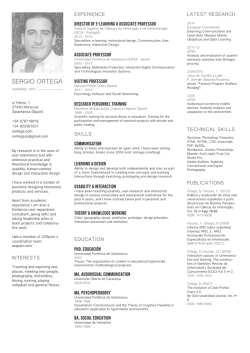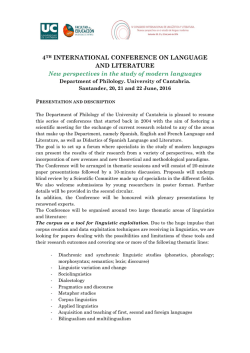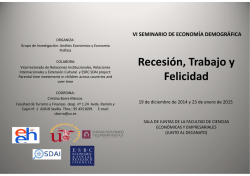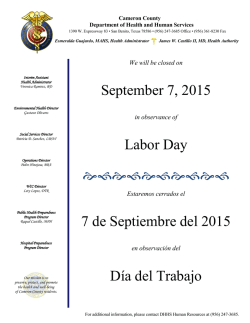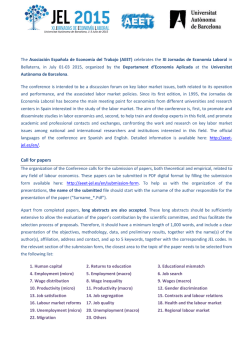
Challenges and the minimalist transitional justice in Colombia
EDITORIAL Challenges and the minimalist transitional justice in Colombia Juan Pablo Sarmiento Erazo* Universidad del Norte The transitional justice has been described as a “balance between the rights of victims and the incentives to end the armed conflict”. It is about a form of juridical transition, that occurs in certain moments of social alteration after an armed conflict, and that sacrifice some values in order to achieve the peace, understanding that this becomes a higher relevant value given that human lives are involved, which is translated as a “Victory for Humanity” (Minow , 2008, pp. 1287-1309). In the words of Martha Minow, transitional justice seeks responses to the collective violence that open a path between vengeance and forgiveness (Minow, 2011, p. 87). It is clear that all transitional processes try to balance the “moral imperatives” (Meister, 2011, p. 162), and reconcile the legal justice demands with equity and the stabilization of social peace promoting the relationship between justice for past crimes and a new political order (Paige, 2009, p. 323). The transitional process is based on a values classification that usually is developed through three political options: Amnesty, Truth Commissions and Criminal Prosecution (Grodcky, 2009, pp. 820-825), and * Abogado de la Pontificia Universidad Javeriana, Magíster y Doctor en Derecho de la Universidad de los Andes. Estancia doctoral en la Universidad de Nantes-Francia. Profesor e investigador de la Universidad del Norte, Barranquilla-Colombia. Director del Grupo de Litigio de Interés Público de la Universidad del Norte y de Caribe Visible. [email protected], jua-sarm@ uniandes.edu.co revista de derecho, universidad del norte, 46: vii-x, 2016 ISSN: 0121-8697 (impreso) • ISSN: 2145-9355 (on line) vii in every case they turn into mechanisms that offer a diversification of collective memory to bring the possibility, just the possibility, to reconfigure the societies instead of stimulating the hate (Minow, 2011, p. 90). Authors, such as Lambourne, also include within the policy options socio-economics justice that can be incorporated in the material compensation, restitution or reparation for previous violations, but that supposes also, a fair socio-economic distribution for the future, called “prospective justice”, that usually goes together with the assurance for overcoming structural violence and sustainable peace (Lambourne, 2009, p. 14). However, comparative experiences are not identical; frequently, the weakest regimen where the transitions were not deep, maybe, as Colombian case, ended in the rehabilitation and compensation for the victims, creation of Truth Commission and purging human rights abusers from public function, but doesn´t includes the criminal conviction of “executors” (those lower on the chain-of-command) and criminal prosecution of “commanders”. In the Colombian case, is possibly than the political power transfer doesn´t go be profound and there are a big risk to fall to the “minimalist transitional justice” (Lambourne, 2009, p. 824). Grodcky demonstrates that it depends mostly on the sensitivity of the elite to change or the extent of commitments in times of post conflict on economic and common goods matters, that make a notorious difference in the “non-successful launches of each spectrum mechanism” (Grodcky, 2009, p. 831) . According to this, Arthur Paige advises an analytical impoverishment of transitional justice, in which the violence is analyzed in terms of human rights violations; but not as an expression of the dominant class (Paige, 2009, p. 341). In effect, the “minimalist transitional justice” observes that judicial decisions involves symbolic or comparatively insubstantial programs where decisions are limited to each case, and limited to a specific delinquency type (Sitaraman 2013, p. 117). Therefore, transitional justice in the Colombian last dialogues with another guerrillas and paramilitaries groups, has been focused on criminal persecution, ignoring the cause -interests or ideologies– behind such violence. Hence, the assessment of the political role of transitional justice institutions often omits the analysis of the tension between the efforts to viii revista de derecho, universidad del norte, 46: vii-x, 2016 ISSN: 0121-8697 (impreso) • ISSN: 2145-9355 (on line) expose, remember and understand political violence; and their role as a tool for ensuring stability and legitimacy of transition commitments (Bronwyn, 2008, p. 97). The transitional justice institutions also aspire to challenge and transform the inherited values and the long-term political relations, and not just designed to promote the punishment, also seek to reach to an imperative political reform (Bronwyn, 2008, p. 101). The Havana negotiations between Colombia Government and Fuerzas Armadas Revolucionarias de Colombia —FARC-EP— are discussing the policy of comprehensive agricultural development and participation in politics that would look FARC members to a possible surrender of weapons; the end of the conflict; a policy of illegal drugs; and finally, reparations for victims, both of the FARC and Colombian State. However, it is possible that the negotiations could fall in the minimalist transitional justice, but they have the risk of creating a number of provisions that are lost between the abyss between issuing a law and make it effective. REFERENCES Grodcky, B. (2009). Re-ordering justice: towards a new methodological Approach to studying transitional justice. Journal of peace research, 46 (6), 819-837. Lamborune, W. (2009). Transitional justice and peacebuilding after mass violence. The international journal of transitional justice, 21(1), 28-48. Meister, R. (2011), After evil, a politics of human rights. New York: Ed. Columbia University. Minow, M. (2011). Memoria y odio: ¿Se pueden encontrar lecciones por el mundo? En Justicia Transicional (pp. 80-99). Bogotá, D.C.: Siglo del Hombre Editores, Universidad de los Andes y Pontificia Universidad Javeriana. Paige, Arthur (2009). How “transitions” reshaped human rights: a conceptual history of transitional justice. Human Rights Quarterly, 31(1), 321–367. Sarmiento, J. P. (2016). Justicia transicional sin transición, el caso de la masacre de Nueva Venecia: Revista Co-herencia (Universidad EAFIT), 13 (24), 181-211. Sitaraman, G. (2013). The Counterinsurgent´s Constitution, law in the Age of small wars. Cambridge: Ed. Oxford University Press. revista de derecho, universidad del norte, 46: vii-x, 2016 ISSN: 0121-8697 (impreso) • ISSN: 2145-9355 (on line) ix
© Copyright 2025
